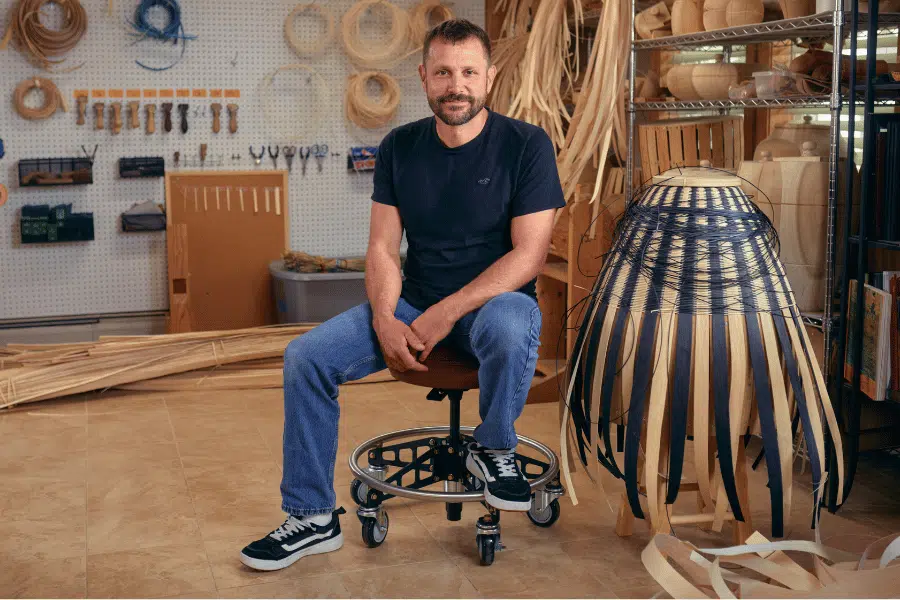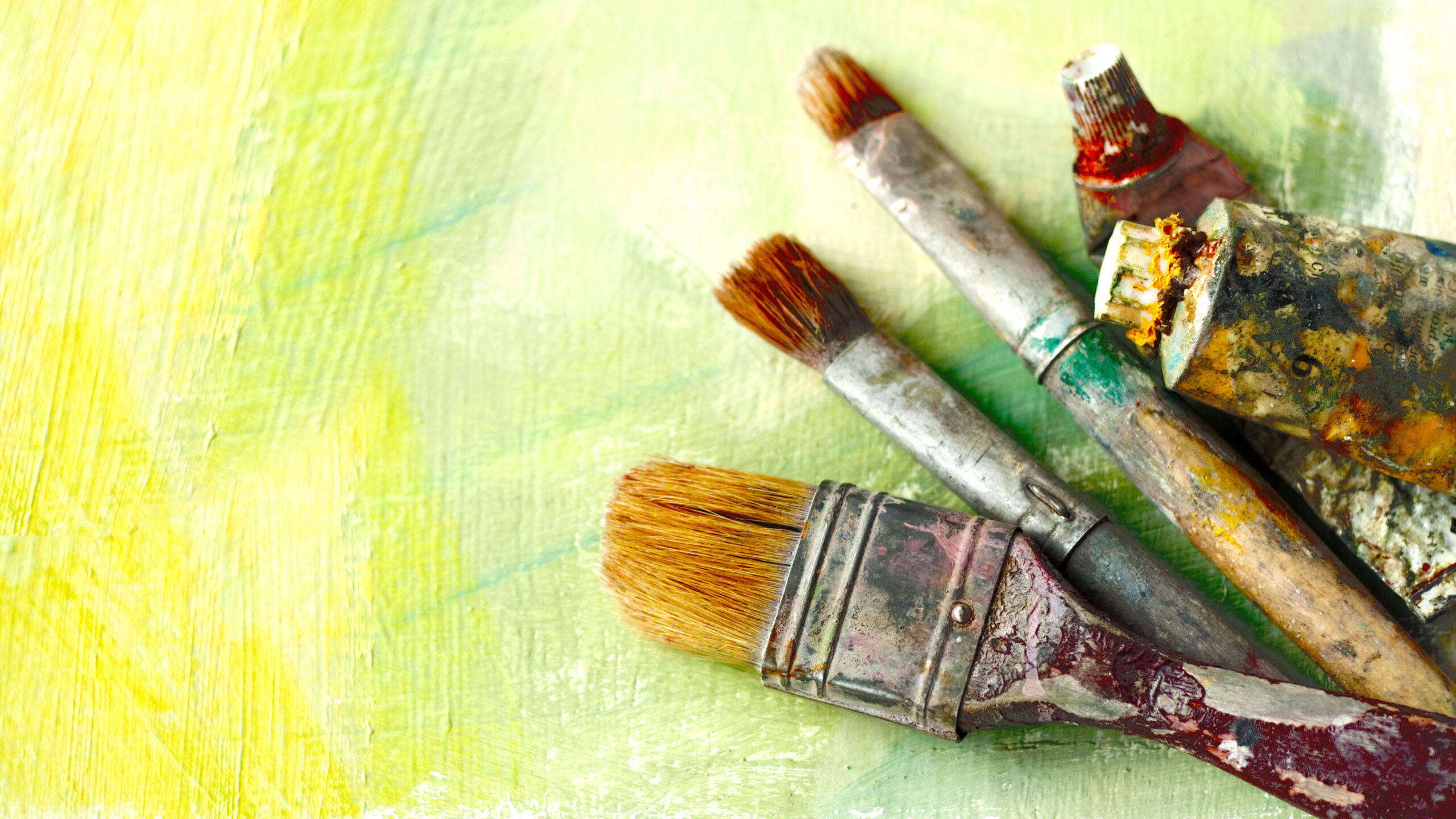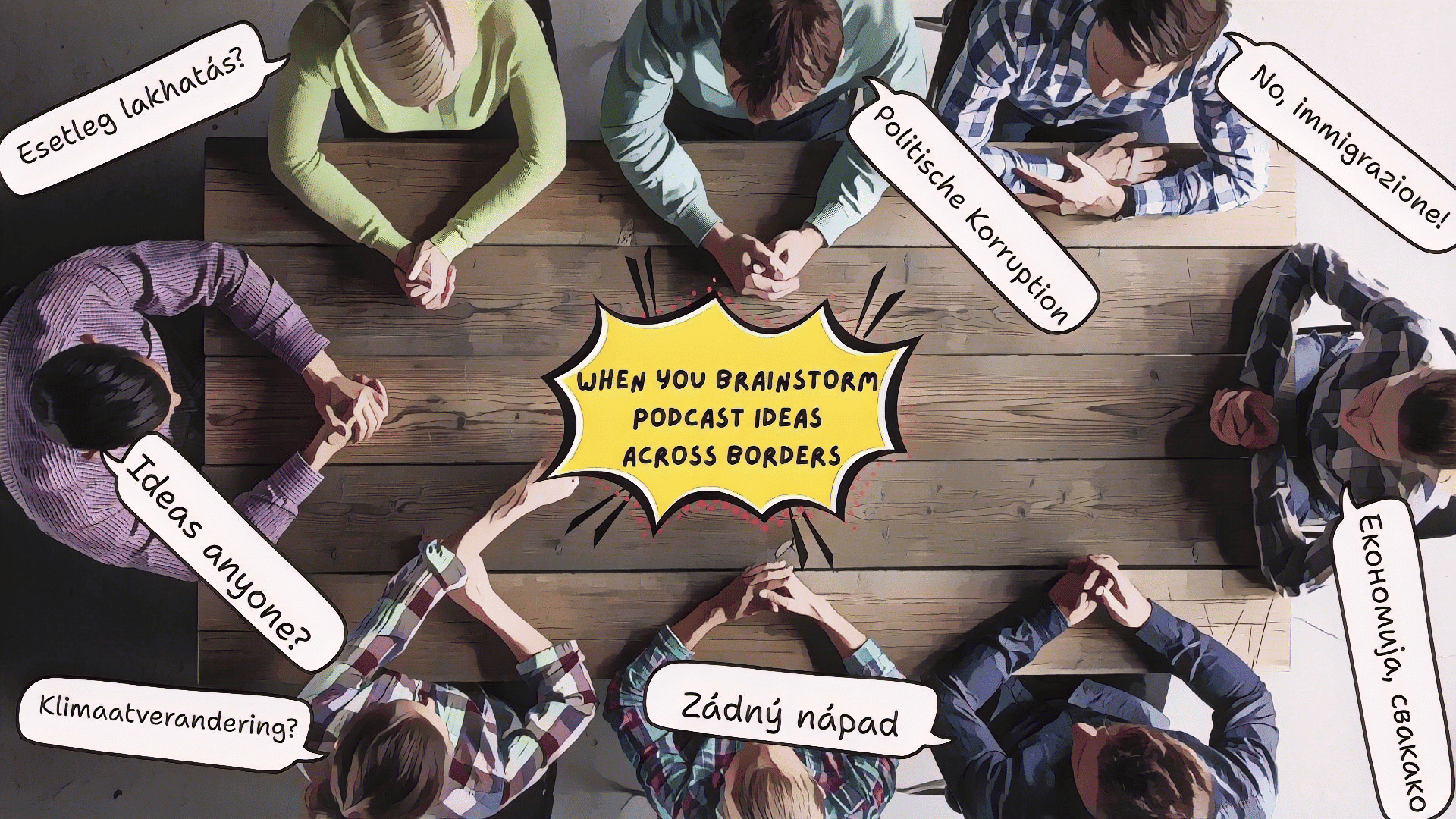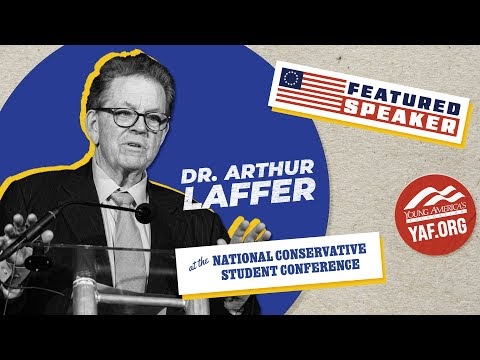

Join HEPI for a webinar on Thursday 11 December 2025 from 10am to 11am to discuss how universities can strengthen the student voice in governance to mark the launch of our upcoming report, Rethinking the Student Voice. Sign up now to hear our speakers explore the key questions.
This blog was kindly authored by Professor Rathna Ramanathan, Provost, Central Saint Martins; Executive Dean for Global Affairs and Professor of Design and Intercultural Communication, University of the Arts London.
The structure of our universities is stuck in the past. The recent post-16 education and skills white paper praises our universities as globally excellent institutions but calls for a reorientation towards national priorities and greater efficiency. As academics and creatives functioning as outsiders, we can use this position productively to define future pathways.
We’re living through multiple crises at once – climate emergency, polarization, AI disruption – yet most universities still organize themselves around departments created decades ago. Institutions talk endlessly about ‘interdisciplinary collaboration’ and ‘preparing students for the future’, yet their actual structures often make both nearly impossible.
At Central Saint Martins, University of the Arts London, we have tried something different. We have redesigned the College by rethinking what an art and design college should focus on and how it can work, guided by shared principles that emerged from asking: ‘What does it look like when we work together at our best?’
We ask students to be creative, adaptive, bold. To embrace complexity and imagine different futures. What could our universities achieve if we reorganised ourselves with the same creativity we demand from students?
The institutions that thrive in the coming decades won’t be those defending traditions most fiercely. They will be those with the courage to redesign themselves for the world emerging, not the one they were built for. That’s uncomfortable. Structural change is difficult and uncertain. Letting go of familiar categories and hierarchies requires trust. Building new collaborative cultures alongside new organisational structures demands sustained effort. This discomfort might be precisely the point. If universities can’t model the adaptive, experimental, principles-led thinking we claim to teach, why should anyone trust us to prepare the next generation for an uncertain future? More bluntly, if we don’t practice what we teach, do we deserve to thrive?
For over a century, universities have organised themselves into disciplinary silos. This made sense when knowledge was more stable, and career paths were more predictable. But today’s urgent challenges don’t heed disciplinary boundaries and require insights from science, policy, economics, ethics, design, and creative practice simultaneously.
Most universities recognise this. They create joint programmes and support cross-department initiatives. Yet the fundamental architecture remains unchanged: separate budgets, isolated governance structures, academic staff working within disciplinary lanes. It’s like trying to renovate a house by rearranging the furniture while leaving the walls intact.
For students, this disconnect is glaring. They see interconnected problems everywhere, yet are asked to choose a single discipline and stay within it. They want to learn how to think, not just master a predetermined skill set. Traditional university structures also inadvertently reinforce whose knowledge counts and whose doesn’t, often privileging Western over non-Western perspectives, theory over practice, and individual achievement over collective wisdom. In an era demanding intercultural, community-centred, and future-focused approaches, these inherited biases have become institutional liabilities.
Central Saint Martins’ transformation began with a fundamental question: ‘What does it look like when we work together at our best?’ From this inquiry emerged five core principles that now guide decision-making at College level: address shared conditions that transcend disciplines; seek common ground through equitable collaboration; treat the whole life of the College as creative material; bring practice to every space; and deepen connections with communities beyond our walls. These aren’t aspirational statements. They’re operational principles that inform the creation of a new structure: ‘Schools of Thought’.
Most university ‘schools’ function as management layers above departments with administrative structures for top-down control. At Central Saint Martins, we are inverting this model. Our Schools of Thought establish shared foundations beneath courses and programmes, creating common ground where disciplines naturally converge.
Each school aims to be transdisciplinary (integrating ways of thinking), not merely multidisciplinary (putting disciplines side-by-side). They’re collective, not just collaborative. The naming strategy – C + S + M = CSM – emphasises the whole over parts. Rather than reinforcing disciplinary boundaries, they create space for working across schools while adapting to changing conditions.
C School [Culture] explores culture as a vital form of enquiry and expression, developing thinking and practice across art, performance and curation. It recognises culture in the immediate world around us, understanding it as a sense-making activity.
S School [Systems] explores how different forms of designing allow us to understand and intervene in the complex human systems shaping our world through graphic communication, product and industrial design, architecture, business innovation, and creative enterprise.
M School [Materials] investigates radical approaches to materials, making, and meaning-making through fashion, textiles, and jewellery to digital interaction, scientific innovation, and multi-species regeneration.
What makes this transformation different from typical restructuring is its foundation in shared principles rather than predetermined outcomes. The principles emerged from collective reflection on the College’s actual lived experience, examining when authentic collaboration and meaningful impact happen. They aim to capture the heart of the College’s culture rather than imposing an abstract ideal. They create coherence without rigidity, alignment without conformity.
Schools of Thought are not viewed as resolved but as vehicles for ongoing transformation. They provide low-walled frameworks for continuous evolution, adapting to changing conditions while staying true to core values. As communities and conversations develop, the schools themselves will transform, shaped by the very practices they enable.
Traditionally, art and design education has reinforced colonial perspectives, unsustainable production and cultural hierarchies; biases that reproduce invisibly through inherited disciplinary structures. The principle of ‘addressing shared conditions’ makes complicity in global crises unavoidable rather than optional, preventing justice and sustainability from being relegated to elective courses or diversity initiatives.
‘Seeking common ground’” creates space for marginalised knowledge systems, while ‘taking the whole life of the College as material’ reveals institutional truths through the lived experiences of our staff and our students rather than stated values alone.
We can’t truly prepare students for the climate crisis, technological disruption, or polarisation by adding modules to unchanged systems. The structure needs to embody the values and capacities these challenges demand.
Creative education isn’t primarily about self-expression or beautiful objects. But approached as Central Saint Martins has, creativity becomes a methodology for engaging with uncertainty as traditional certainties collapse.
‘Bring practice to every space’ makes thinking-in-formation visible, cultivating comfort with ambiguity and the capacity to learn from failure—all critical for navigating unpredictable futures. “Deepen external connections” recognises that knowledge develops through genuine dialogue with communities beyond institutional walls, not expert pronouncements.
These approaches value prototyping and iteration over perfect solutions, holding contradictory ideas simultaneously, collaborating across difference, and making abstract possibilities tangible. We want to apply creative principles to institutional transformation, treating the restructuring as an experimental, collaborative, and iterative process rather than a top-down plan.
Although rooted in creative arts, the principles-led approach transfers across sectors. Imperial College London’s recently launched Schools of Convergence Science reflects similar recognition that traditional structures no longer serve contemporary challenges. Structural change requires more than new organisational charts. It requires:
Any university can ask itself: What principles characterise when we work at our best? How could we design structures that enable rather than constrain that work? What would it mean to organise around shared conditions rather than inherited categories?
As higher education gets increasingly othered in new policies, outsiders can provide the breakthroughs needed by taking a fresh perspective. As ‘The genius of the amateur’ points out, outsiders often succeed because progress is about generating models which we then test, apply and refine. We can’t do this alone at Central Saint Martins, University of the Arts London, we need to do this collectively: to genuinely practice for ourselves what we teach and to create a space which isn’t about silos or othering but where all of us are welcome.

Amazon removed several James Bond posters last month after fans noticed that Bond’s iconic Walther PPK pistol had been airbrushed out of each one. Sean Connery and Pierce Brosnan were left standing in various awkward poses, raising their empty hands.
The posters, which Prime Video had put up for Global James Bond Day on Oct. 5, were later replaced with “safer” film stills, most of which still omitted firearms.
If the edit felt eerie, it also felt familiar. Last year, Prime Video displayed Philip Castle’s Full Metal Jacket poster. But the words “Born to Kill,” which originally appeared next to a peace sign in reference to the film’s core theme of the duality of man, were notably absent from Private Joker’s helmet. After actor Matthew Modine objected, and Warner Bros. intervened, Amazon restored the original artwork. But no explanation followed.
These edits aren’t one-offs. They follow Amazon’s own rules. Prime Video’s artwork requirements tell partners to “avoid adult or profane language” in titles, “keep text to a minimum,” and “avoid images of . . . guns, or other weapons.” If a realistic firearm appears, it cannot be dominant, aimed, in use, or pointed at the viewer. A companion Graphic Assets Guide adds, “We avoid using violence in Amazon promotions.”
From a corporate perspective, such guidelines serve practical aims: Amazon cites maintaining brand safety and optimizing user interfaces as reasons for these rules. As a private entity, Amazon can prioritize those goals above third-party expressive interests; the company has its own First Amendment right to exercise editorial discretion about what it posts online. Amazon has no legal obligation to carry every title or preserve every poster exactly as originally designed.
Yet when Amazon treats works like the iconic Full Metal Jacket poster as expendable marketing collateral, editing them for risk management rather than preserving them as legacy art, the result is cultural bowdlerization. In a Bond poster, a pistol is not merely decorative — it’s essential to the franchise’s aesthetic.
After the opening credits, what’s Bond’s first move? He breaks the fourth wall by shooting the viewer. In Full Metal Jacket, “Born to Kill” isn’t just a slogan — it embodies the film’s thesis that there are no good or bad people, but that inclinations toward peace and violence run through each of us. Removing these elements doesn’t make the images safer. It makes them artistically compromised, less reflective of their cinematic and literary sources.

Bond and Private Joker aren’t the only victims either. In recent years, Prime Video has removed, demoted, or delayed a number of controversial films — often without a clear rationale. In 2019, Amazon removed several anti-vaccine documentaries, hours after Rep. Adam Schiff wrote an open letter asking Amazon CEO Jeff Bezos to curb such content. Private platforms can decide how to treat third-party content they publish, but doing so based on government pressure is to succumb to a form of censorship-by-proxy known as “jawboning” — which, as FIRE Legal Director Will Creeley recently told the Senate Commerce Committee, violates the First Amendment.
During Black History Month in 2021, the documentary Created Equal: Clarence Thomas in His Own Words disappeared from Amazon’s catalog without explanation — and returned only after media coverage of its removal. Amazon’s self‑distribution portal initially rejected conservative writer Shelby Steele’s documentary What Killed Michael Brown? before it later appeared on Prime Video. In late 2023, Amazon removed the Russiagate documentary The Plot Against the President. A source told Newsweek the takedown wasn’t political, but Amazon didn’t elaborate. In 2024, filmmaker Robby Starbuck said Prime Video banned his documentary The War on Children. Months later, it was available on Amazon again.
Even where calling something a “ban” is overstated, the optics create a chilling pattern: clumsy decisions first and clarity later, but only when pressed. Early coverage of FIRE’s own documentary, The Coddling of the American Mind, even asked whether Amazon would carry it. It’s now rentable on Prime Video, but Amazon’s distribution lagged behind the premiere.
Globally, Amazon often adjusts content to satisfy illiberal governments. A Citizen Lab study of Amazon’s U.S. storefront found 17,050 products — mainly books — restricted from shipment to certain regions. The clusters weren’t random either. LGBT topics, Christianity, erotica, the occult, and health/wellness were overrepresented, and users were rarely told why. In the United Arab Emirates in 2022, under government pressure, Amazon restricted searches for LGBT‑related terms and removed certain items, including books, from local sale. In China, Amazon’s site disabled ratings and reviews on a book of Xi Jinping’s speeches — at Beijing’s request.
It’s not tidying the user interface. It’s repainting the past, affecting our cinematic and literary heritage.
Threaded together, a pattern emerges. Amazon doesn’t bowdlerize in the old sense. It sanitizes — quietly, sometimes briefly, and rarely with a paper trail. Its poster guidelines nudge against weapons and text, its film platform sometimes disappears politically touchy work, its book storefront can demote titles under political pressure or restrict shipments by region, and its foreign subsidiaries comply with illiberal laws.
Again — none of this is unconstitutional for an American company. Private companies have First Amendment rights to curate their platforms however they want. But what’s legal isn’t always wise.
When a company edits Bond’s gun out of a poster or scrubs Private Joker’s motto, it’s not tidying the user interface. It’s repainting the past, affecting our cinematic and literary heritage. When it removes a title without explanation and restores it only after fuss, it signals that cultural expression is disposable and subservient to political and corporate interests.
Prime Video bowdlerizes “Full Metal Jacket” movie poster, removing the phrase “Born to Kill” written on the helmet.
Amazon says on its own website, “We approach our technology design with a focus on privacy, safety, security, access to information, and free expression.” That’s a fine start. But if Amazon truly wants to honor that promise, it should bring sunlight and accountability to its moderation practices. Amazon should report country-by-country restrictions, and if it must edit an image, tag it “Modified for Prime Video artwork standards” with a link to uniform rules. On its website, Amazon further states:
We understand that what one person considers offensive may not necessarily be offensive to others and that views can change over time. As a store, we’ve chosen to offer a very broad range of viewpoints … We strive to maximize selection for all customers, even if we don’t agree with the message or sentiment of all of the products.
But on that very same page, Amazon “prohibit[s] the sale of products that promote, incite, or glorify hatred, violence, racial, sexual, or religious intolerance or promote organizations with such views.” These claims appear to contradict each other.
Amazon would be doing the culture of free expression a great service if it embraced the same principle that made the open internet possible in the first place: the belief that people can think for themselves.
Art exists to confront us, not flatter us. Bond’s pistol and Private Joker’s helmet offer such confrontations. Violent, racial, and sexual content can disturb, but these are also core themes in art. A platform that smooths those edges may follow corporate best practices, but it imposes a heavy cultural cost on us all — one we should refuse to pay.

The MacArthur Foundation selects a diverse group of people for an award dubbed the “genius grants”. In doing so they help us redefine our measure of success.
Source link

Pepperdine officials modified a sculpture to delete the text.
Henry Adams/Pepperdine Graphic
Last month Pepperdine University in Malibu, Calif., opened an art exhibit titled “Hold My Hand In Yours,” which was scheduled to run for six months in the on-campus Frederick R. Weisman Museum of Art. But On Oct. 6, the university closed the exhibit after artists learned their work had been removed or altered for being “overtly political.”
The exhibition, curated by Weisman Museum director Andrea Gyorody, centered on the imagery of hands in paintings, drawings, sculpture and videos, among other media, with a focus on hands as a means of labor and care, according to the museum’s website.
Last week, one of the artists in the show learned her video had been turned off at the university’s request, and a sculpture had been modified to hide text that said “Save the Children” and “Abolish ICE,” Hyperallergic reported. The creators requested their pieces be removed from the museum, and several other contributors followed suit in solidarity with the affected artists and in opposition to the university.
Pepperdine administrators alleged the pieces went against the museum’s policy to “avoid overtly political content consistent with the university’s nonprofit status,” Michael Friel, senior director of communication and public relations at Pepperdine, told Inside Higher Ed in an email.
In addition to removing pieces, the university inquired about posting signage that notifies visitors that “the artwork does not necessarily reflect the views of the university,” Friel noted. “That process has not been successful.” With the addition of the artists pulling their work, the museum decided to close the gallery. All compensation agreements are being honored and inconvenienced artists have received an apology, according to Friel.
“For the past week, the administration’s rationale for the initial censorship and removal has been murky and opaque, and honestly, still unclear to me. It didn’t have to be this way,” Stephanie Syjuco, an artist who was featured in the show, wrote on Instagram.
The Weisman Museum is housed under the university’s advancement office. “Our intent is to maintain the highest standards of excellence as we celebrate artistic expression through the visual arts,” Friel said.
In 2019, Pepperdine censored a senior art student’s gallery because the art featured nude bodies; officials placed the art in a mobile gallery instead of in the Weisman Museum, which featured work by the artist’s peers.

The creation of a new super university in South East England, through the merger of Kent and Greenwich, signals both a turning point and a warning.
Advocates see consolidation as the promise of scale and resilience.
Critics fear homogenisation, loss of identity, and narrowing of choice.
Both could be right.
What matters most is not the merger itself but the logic that underpins it. In the absence of a shared national mission for higher education, mergers are now framed as solutions: a form of market rationalisation presented as vision.
Since the 2012 funding reforms, higher education has been treated less as civic infrastructure and more as a competitive market. Public investment was replaced by loans. Students were told to think like investors. Degrees became receipts.
Into the gap left by an absence of national purpose rushed hyper-regulation: metrics, thresholds, and questions of fiscal viability. Within this narrowed frame, mergers appear logical. Bigger looks cheaper. Consolidation looks like progress. But without a shared mission, the deeper questions go unanswered.
For much of the last century, almost every town in Britain had its own art school: civic in origin, modest in scale, and rooted in place. In the 1960s there were over 150 across England. Over time, that dispersed civic network was redrawn. Some schools were absorbed into polytechnics, some federated into new structures, many disappeared.
From this history, four models emerged: the consolidated metropolitan brand, uniting multiple colleges under one identity; the regional federation spread across towns and cities; the specialist regional provider rooted in place; and the art school absorbed into a larger university. All four persist, but history shows how quickly the civic and regional variants were erased in the pursuit of scale. That remains the risk.
Super universities are most often justified through promises of efficiency and resilience. The patterns of merger and acquisition are familiar, exercised through cuts, closures, and the stripping back of provision. Contraction is presented as progress.
And what follows: a merger into an “Ultra Super University”, a “Mega University”? The logic of consolidation always points in that direction. Fewer institutions. The illusion that size solves structural problems.
But what if the future of universities is regional, hybrid and networked? Do mergers enable this? Or do they reduce it, by erasing local presence in the pursuit of efficiency?
The risk is not only that provision shrinks, but that our regional and civic anchors are lost. A university’s resilience lies not in the absence of difference but in its presence: in the tolerance of variety, the recognition of locality, and the capacity to sustain attachment.
UCA grew from a federation of art schools, distributed rather than centralised, holding to a civic model of place. This has been hard to sustain in today’s free market. However, our University has become a place for those who find belonging in community, for outliers and outsiders at home in the intimacy of a civic setting, rather than the intensity of the metropolis. Our resilience shows how creative specialist schools can generate strength from vulnerability. Our story also foreshadows the systemic pressures now confronting universities everywhere.
The Kent–Greenwich merger now brings new possibilities for Medway, positioned between Greenwich and Kent and home to a university campus for them both. If approached with care, it could restore creative presence to a place long on the periphery.
Our civic project persists at Canterbury School of Art, Architecture and Design. Our founder, Sidney Cooper, a local painter, established Canterbury’s School of Art in 1868 as a gift to the city. It has survived every reform since. In the 1960s it moved into a modernist building, future-facing yet rooted in the Garden of England.
That identity carried it through polytechnic consolidation, university expansion, and marketisation. It remains its strength now: an art school for the city, of the city, and in the city. Creativity is lived as much as it is taught.
For us at UCA Canterbury, the alternative is clear. Ours is a human-sized proposition: intimate, civic, distinctive. A place where students are known by name, where teaching is close, and where creativity is inseparable from civic life.
We intend that our graduates remain in creative professions for life, not because of economies of scale but because of the depth of their formation. Small institutions enable what scale cannot: intimacy, belonging, and the tolerance of difference. They cultivate attachment to place, the character of community, and the fragile conditions in which nuture and trust can grow. These are not marginal gains. They are the essence of education itself. Vulnerability, when named and advocated for, becomes strength.
This is the measure against which any super university must be judged: not whether it scales, but whether it sustains the human scale within it. The crisis in higher education is not only financial but cultural. It is about whether universities can still act as places of meaning, attachment, and public need.
Our founder, Sidney Cooper, understood in 1868 that education was not about scale but about purpose. That mission still speaks. In the shadow of consolidation and the spectre of Artificial Intelligence, what must endure is the human scale of learning and belonging.
To sustain it is a choice we must keep making.

As communications manager, I quickly learned that translation is never just about swapping words. It’s about tone, style, even design. A press release that sounded professional in Paris could feel cold in Rome. A social media graphic that looked fresh in Madrid felt too flashy in Berlin.
The solution was to build a common identity and then let each country adapt it. Slower, yes. But the result felt more authentic, and audiences responded.
These challenges are not unique to communication teams; they are central to journalism itself. The biggest stories today — migration, climate change, political unrest — rarely stop at national frontiers. To cover them well, reporters must collaborate across borders.
That type of collaboration is messy. Sources are harder to coordinate. Legal and cultural differences can complicate investigations. And readers, or listeners, may have very different expectations depending on their nationality or where they live.
But when it works, it is powerful. Our podcasts carried voices across Europe, letting audiences in one country hear accents, pauses and perspectives from another. It turned abstract debates into human stories.
Working across cultures also reminded me that projects are not just tasks — they are people. Some partners preferred long memos, others quick calls. Some valued hierarchy, others wanted open debate. I learned to leave space for informal chat, to ask how colleagues were doing before diving into deadlines.
Those small gestures built trust, and trust kept the project moving.
For young journalists and students, the lesson is simple: cross-border work can feel messy, but it’s worth it. Don’t be discouraged by misunderstandings; they often lead to clearer understanding. Pay attention not only to language, but to culture. And above all, listen.
My two years with WePod taught me that communication is less about perfect phrasing and more about building bridges. In the end, that is what journalism itself is meant to do: connect people across borders, cultures and languages.
1. What does the author mean by translating is more than swapping out words?
2. How can people from different countries and cultures find a common identity?
3. How would you communicate with someone who speaks a different language?

Arthur Laffer, the Reagan-era economist best known for the “Laffer Curve,” appeared recently at a Young America’s Foundation (YAF) event, still making the same tired claims that have shaped decades of economic inequality, deregulation, and magical thinking. The event, broadcast on C-SPAN, was marketed as a fresh take on conservative economics. What it delivered instead was a rerun of discredited supply-side talking points—punctuated by jokes that fell embarrassingly flat.
Laffer claimed that Donald Trump’s tariffs were a strategy to bring about more free trade in the future—a baffling contradiction to anyone who understands trade policy or the basics of coercive economic diplomacy. The idea that protectionism is a roundabout route to free markets would be laughable if it weren’t so destructive. But Laffer, like many libertarians, thrives on contradiction. The audience—young, mostly white, mostly male—nodded along as if it all made sense.
He also defended increased U.S. military spending, invoking Ronald Reagan’s 1980s arms buildup. What he didn’t mention: Reagan was in the early stages of dementia during his presidency, and his military strategy deepened the national debt, even as Laffer’s beloved tax cuts starved the government of revenue. That context never surfaced, of course.
Laffer’s appearance was followed by Linda McMahon, former WWE executive and Small Business Administration head under Trump. The tag team pairing reinforced the spectacle of right-wing economic theater disguised as intellectual discourse.
YAF, a competitor to Turning Point USA, presents itself as the more polished brand of conservative youth organizing. It’s backed by deep pockets and institutional support, but its message remains the same: glorify the market, demonize government, and elevate charisma over critical thinking. Its speakers are well-coached in rhetorical sparring, skilled in sophistry, and eager to exploit the inexperience of their college-aged audience.
Laffer fits that mold perfectly. He’s less a thought leader than a relic of failed policy, propped up by a movement that rewards ideological loyalty over intellectual honesty. His ideas can’t really be called “theories” anymore—empirical evidence has repeatedly debunked them. But among libertarians and the far right, evidence is optional, and repetition is persuasive.
Young America’s Foundation is adept at drawing youth into a worldview of individualism that rarely benefits individuals. It relies on the passion and ignorance of its followers, asking them to embrace contradictions: that tariffs bring freedom, that debt from war is freedom, that cutting taxes magically increases revenue. It’s a faith-based economics, and Laffer remains its high priest.
In the end, the only thing more stale than the Laffer Curve is the attempt to keep it alive.
Sources:
C-SPAN: Art Laffer speech at YAF
Reagan’s Alzheimer’s revelations: The New York Times
Critiques of supply-side economics: Brookings, Economic Policy Institute
YAF background: Media Matters, The Nation